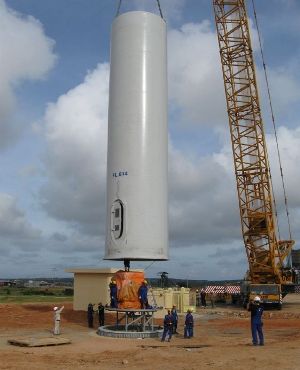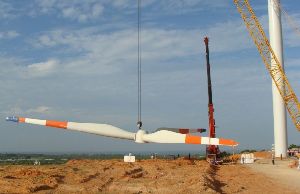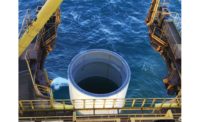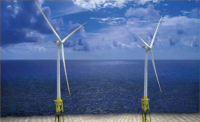

Vietnam's first wind farm was recently completed, and plans are in the works to add additional capacity. The $70-million, build-own-operate project is located in the Binh Thuan's Tuy Phong District on the country's South Central Coast, near Ho Chi Minh City. The plant has an installed capacity of 30 MW, produced from 20 1.5-MW turbines, but is slated to eventually have 80 turbines, taking its installed capacity to 120 MW, according to the Renewable Energy of Vietnam Join Stock Co. (REVN), the investor and developer.
The project contributes to Vietnam's national energy development strategy, which calls for 5% of power to be generated by renewable sources by 2020, increasing to 11% by 2050. Investors are attracted by incentives such as favorable land and water lease terms, land-site clearances, depreciation and subsidies on tariffs. A draft plan would add import-tax exemptions for wind-power equipment and reduced corporate income and land-use taxes. It would also give investors access to loans for up to 80% of the project cost, along with preferential interest rates.
The Binh Thuan Wind Farm is located near the coast in an arid area usually short in rainfall but abundant in wind. German-based manufacturer Fuhrlander's pitch-controlled FL MD77 turbines were used due to its availability at different hub heights, to take advantage of the mixed conditions at the site. Each 80-meter tower weighs 78 tons and carries three 77-m-dia blades. In 2009, the German government (through the German Technical Cooperation) provided $1.47 million to develop a legal framework for the wind industry in Vietnam.
There were lessons to be learned along the way, says REVN sources. As in India when wind energy took off two decades ago, transportation to the site and availability of cranes posed a problem. In a recent presentation, REVN officials said that roads must be designed for convenient transportation of equipment and large cranes, 500 tons or greater, and the loading port must be equipped with suitable lifting devices near future project sites. Experienced contractors and skilled management were not easily available for the construction of the turbine foundation base ring to ensure flat area in compliance with regulations.
Located in the monsoon wind zone, Vietnam’s coastal provinces are ideal for wind farms, given their high wind-power density and open spaces, officials say. Total potential of wind energy in Vietnam is estimated at 713,000 MW.



Post a comment to this article
Report Abusive Comment